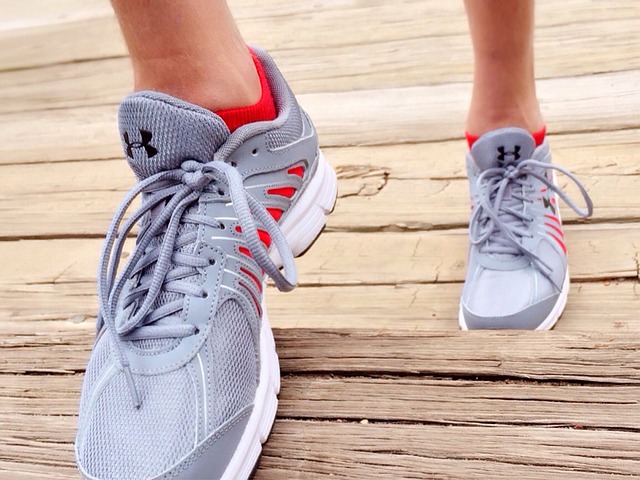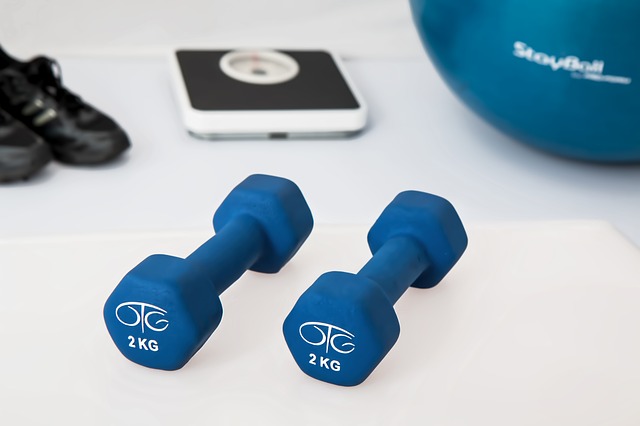In a recent blog post, we introduced fitness programs at work and the role employers can play in promoting healthy, active lifestyles. As a follow up to this, we are offering some simple, fun and no to low cost ideas for employers and employees to try in an effort to increase daily physical activity during the work day.
· Take the stairs: Even completing one flight of stairs is a great way to add some cardiovascular exercise into your day and stair climbing is also a great activity to promote strength in the lower limbs. Instead of taking the elevator, opt for the stairs any chance you get. For those that are ambitious, in addition to taking the stairs when you need to, walk or jog a few flights throughout your day or on your break. Even if you take one flight then hop back on the elevator you have done something positive to get your blood flowing.
· Walk and Talk Meetings: The concept is simple, but another easy and effective way to add movement to your day. Instead of sitting down for the duration of a meeting, allow employees to walk around the floor or building (outdoors is also a great option, weather permitting).
· Regular Stretch Breaks: Sedentary lifestyles and long periods of static postures have been shown to have serious consequences for our health. Provide employees with diagrams and education on how to complete simple stretches from their desk or work station to help promote position changes, blood flow and flexibility. A good rule of thumb is to complete the stretches once every hour, or any time you begin to feel stiff. Can you have a bell ring, have an email sent, or a message pop up to encourage employees to do a “7th inning stretch”?
· At-Desk Cardio: You don’t have to pay for cardio. This can be as simple as jogging in place in front of your desk, lifting your knees high and walking on the spot, or doing jumping jacks. This can be broken up into 15-30 second intervals completed multiple times over the course of your day and can also be a fun way to relieve stress.
· Wall-Sits for Strength: Find space along a wall or the wall of your cubicle and stand about a foot to a foot and a half away with your back facing the wall. Then lean against it and slide down until your knees are at about 90-degree angles. Hold this position as long as you can (a good rule of thumb is 20 to 60 seconds). Remember to keep your core contracted to help engage your abdominals and support your lower back.
· Park Farther Away: It seems like common sense yet we have become a society of efficiency and effectiveness, and a prime parking spot that reduces the distance we have to walk is the preferred pick for most people. However, by parking further away, this is an easy way to increase the amount of steps you take in a day and increase your amount of overall body movement. Every step counts!
· “Glutes” at your Desk: The “glutes” are a group of muscles in our buttocks region and are one of the strongest muscle groups in our body. You can discretely strengthen and tone your glutes simply through squeezing your glutes as hard as you can and holding for 10 seconds. Then fully relax and rest for 30 seconds. Repeat this exercise up to 10 times.
· Walk it Out: Whether it be on your break, on your lunch, or a pre-determined “activity” break, fit light to brisk walks into your day. Whether it be laps around the office, outside in the parking lot, or around the block, walking helps to improve heart and lung fitness, build stronger bones, and maintain balance. Try walking with a co-worker or offer pre-established routes with information about distance and time so people can select different options to fit their schedules and needs.
· Add Resistance Training to your “Desk-ercise”: Keep light hand weights in your desk drawer and complete different resistance exercises, such as bicep curls and shoulder presses, a few times per day (if you can’t keep weights in your desk, try using a water bottle). For some great tips on how to safely do these exercises, check out: http://greatist.com/fitness/deskercise-33-ways-exercise-work.
· Bring out your Inner Jordan: Put up a basketball net behind the building, or in a non-traffic area on your property, supply a couple basketballs and encourage staff to go out and shoot hoops on breaks. Or, for an indoor version hang a net on the back of your office door.
· Be a Kid Again: Keep a stash of easy and fun equipment in the staff room that all staff can use like skipping ropes, Hula hoops and Frisbees. Can your lunch room accommodate a ping-pong table, indoor shuffle board, air-hockey? Encourage staff play like kids inside or outside so that people can make use of these at any time over the course of the day.
· Free Fitness Classes at Work: Organize “activity trial” days with different forms of exercise and physical activity and help from an instructor for staff to try. Many community groups or local fitness organizations are willing to do a promo or trial class for free in hopes of marketing and promoting their business. However, this can also be a fun and healthy way for staff to bond, manage stress and try new things, all while being active. If possible, offer information to help connect staff who enjoyed a particular class or activity to the corresponding organization or community group in hopes of also encouraging regular participation in physical activity outside of work. Consider yoga, Tai Chi, Martial Arts, Self-Defense, Dance, or even Zumba as some fun options.
For more ways to keep healthy at work, check out our Healthy Workplace page.
Resources
http://www.ualberta.ca/~active/workplace/beforestart/benefits-bottom-line.html
http://greatist.com/fitness/deskercise-33-ways-exercise-work






